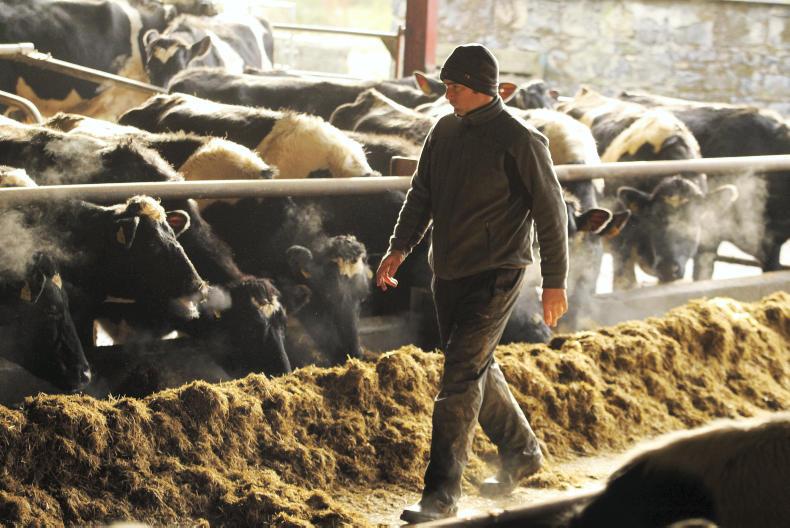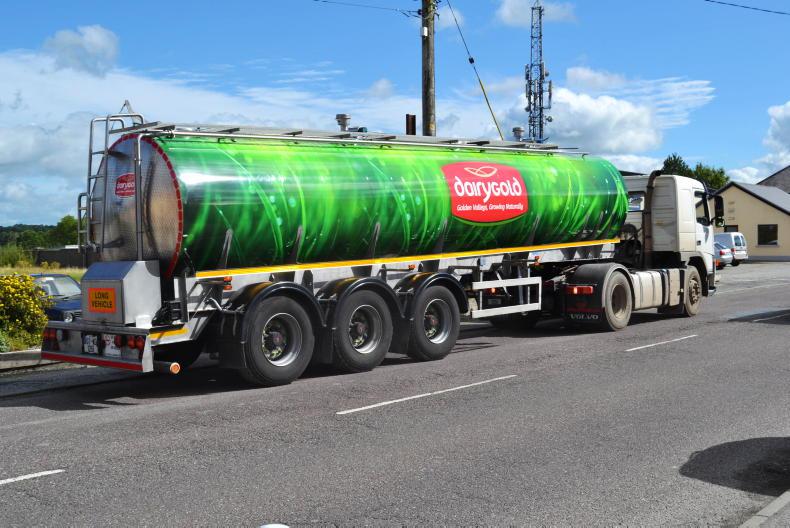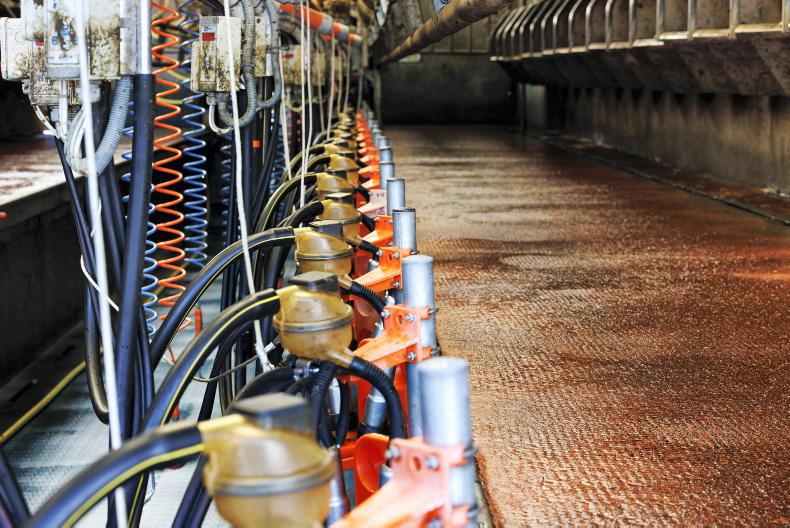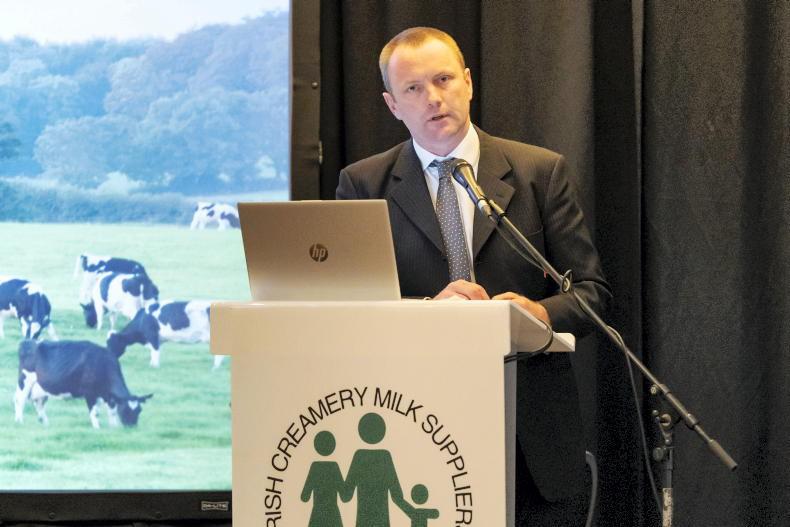It’s been that type of spring so far where the glass has been half empty most of the time, but the rain gauge has been at least half full. The wet weather has been relentless now for at least six months, with soil conditions constantly flip-flopping between soft and heavy to use the horse racing terms.
The cows have been incarcerated on concrete for longer than any spring in living memory but we’ve somehow managed to graze 40% of the milking platform between rain, which is well behind target. We have 90% of the herd calved now so if conditions get any better, we can get back on target with the percentage grazed reasonably quickly. There is no sign of good weather on the horizon yet though.
Grazing conditions on the good days are marginal at best, with cows struggling to clean out the sward properly. We are finding it very difficult to graze any fields without doing some level of damage at gaps and water troughs. The dwindling forage stocks on all farms now is adding to the pressure and stress on all farmers on all soil types.
The wetter farms around here are fighting a constant battle with slurry, especially after the snow and particularly as cows, both milkers and sucklers, come into milk and start to eat more and produce more slurry. Store cattle and maiden heifers have also grown a lot over the winter and are naturally eating and producing more all the time as they grow.
There are very few areas trafficable on these farms now with any kind of machinery. Finding areas to spread when conditions dry up will be very difficult as stock need to go out immediately on the drier paddocks as feed supplies are extremely tight.
It looks like our own maiden heifers will be housed for another week at least. We have enough good-quality wraps for them for another month but, hopefully, it won’t come to that and we will see some improvement in the second half of March. They look to be well enough grown so, hopefully, the long winter won’t have too much of a long-term effect on them.
Throw the grenade of a milk price cut of 3c/l from Glanbia into the stress cauldron with the weather difficulties and the fodder scarcity and there is not much to be positive about this spring. Last week, we had farmers being praised and thanked by Glanbia for their efforts through the snow and ice in keeping roads clear and keeping milk flowing. This week we are getting a different message.
Those kind words of praise were nice to hear, but the bottom line is that the co-op’s margin will be protected first and the farmer will always be secondary to that.
In fact, the farmer’s margin is secondary to all the other steps in the supply chain. Processors, marketeers and retailers all hold or increase their profits when commodity prices fall, it’s just the hard workers at the coal-face that bear the brunt of the cuts.
The recent bad weather may have brought the importance of good-quality wholesome food to the top of the agenda for people for a few days but it will just as quickly slip back into the shadows if we allow it. The latest social media instalment from the Kardashians or the results of the soccer or rugby match will take precedent again.
We live in a society now where food means an experience in a Michelin-starred restaurant rather than a necessity for daily sustenance. We work hard and jump through plenty of hoops to put good quality food on the table both literally and metaphorically and we need to see a meaningful and consistent return for that work sooner rather than later.
Read more
Glanbia to expand infant formula offering at Belview plant
Glanbia to pay farmers 20c/l for milk lost during Storm Emma
It’s been that type of spring so far where the glass has been half empty most of the time, but the rain gauge has been at least half full. The wet weather has been relentless now for at least six months, with soil conditions constantly flip-flopping between soft and heavy to use the horse racing terms.
The cows have been incarcerated on concrete for longer than any spring in living memory but we’ve somehow managed to graze 40% of the milking platform between rain, which is well behind target. We have 90% of the herd calved now so if conditions get any better, we can get back on target with the percentage grazed reasonably quickly. There is no sign of good weather on the horizon yet though.
Grazing conditions on the good days are marginal at best, with cows struggling to clean out the sward properly. We are finding it very difficult to graze any fields without doing some level of damage at gaps and water troughs. The dwindling forage stocks on all farms now is adding to the pressure and stress on all farmers on all soil types.
The wetter farms around here are fighting a constant battle with slurry, especially after the snow and particularly as cows, both milkers and sucklers, come into milk and start to eat more and produce more slurry. Store cattle and maiden heifers have also grown a lot over the winter and are naturally eating and producing more all the time as they grow.
There are very few areas trafficable on these farms now with any kind of machinery. Finding areas to spread when conditions dry up will be very difficult as stock need to go out immediately on the drier paddocks as feed supplies are extremely tight.
It looks like our own maiden heifers will be housed for another week at least. We have enough good-quality wraps for them for another month but, hopefully, it won’t come to that and we will see some improvement in the second half of March. They look to be well enough grown so, hopefully, the long winter won’t have too much of a long-term effect on them.
Throw the grenade of a milk price cut of 3c/l from Glanbia into the stress cauldron with the weather difficulties and the fodder scarcity and there is not much to be positive about this spring. Last week, we had farmers being praised and thanked by Glanbia for their efforts through the snow and ice in keeping roads clear and keeping milk flowing. This week we are getting a different message.
Those kind words of praise were nice to hear, but the bottom line is that the co-op’s margin will be protected first and the farmer will always be secondary to that.
In fact, the farmer’s margin is secondary to all the other steps in the supply chain. Processors, marketeers and retailers all hold or increase their profits when commodity prices fall, it’s just the hard workers at the coal-face that bear the brunt of the cuts.
The recent bad weather may have brought the importance of good-quality wholesome food to the top of the agenda for people for a few days but it will just as quickly slip back into the shadows if we allow it. The latest social media instalment from the Kardashians or the results of the soccer or rugby match will take precedent again.
We live in a society now where food means an experience in a Michelin-starred restaurant rather than a necessity for daily sustenance. We work hard and jump through plenty of hoops to put good quality food on the table both literally and metaphorically and we need to see a meaningful and consistent return for that work sooner rather than later.
Read more
Glanbia to expand infant formula offering at Belview plant
Glanbia to pay farmers 20c/l for milk lost during Storm Emma










SHARING OPTIONS